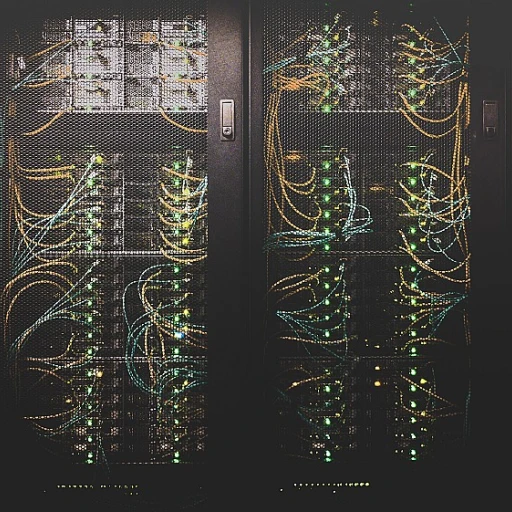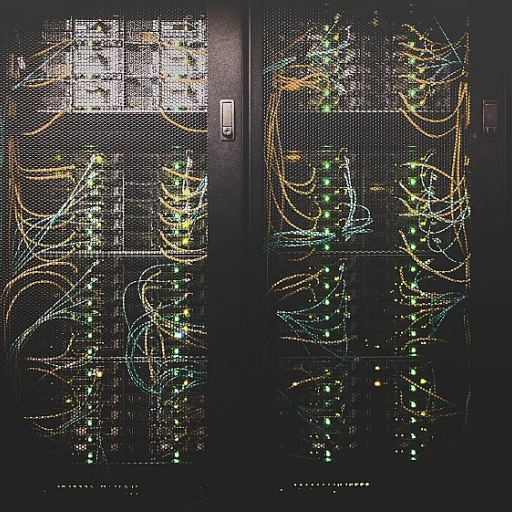
Continuous Integration: The backbone of DevOps
The essential role in software development
Continuous Integration (CI) is a game-changer for software quality and delivery speed. Imagine making daily code changes across a team without an automated process. It'd be chaos, right? This is where CI steps in, integrating code automatically multiple times a day, leading to earlier detection of bugs and smooth project progression.
Fewer errors, quicker diagnoses
When developers frequently commit code, CI tools perform automated builds and tests. If a bug crawls into the codebase, it’s caught early, not weeks down the line. According to a 2021 research by Martin Fowler, teams practicing CI spend 20-30% less time fixing issues. This approach makes the development cycle more predictable and reliable.
Building trust in the codebase
Think about it - every integration is validated by an automated build, which includes tests running each time. This means the code is always in a working state, ready to deploy at any moment. The practice dramatically boosts confidence among developers, as they know the system will detect anomalies straight away.
CI tools: the backbone drivers
There are many popular CI tools like Jenkins, CircleCI, and TravisCI, adopted by industry leaders. According to the 2022 State of DevOps Report by Puppet, 90% of high-performing organizations use automated CI pipelines, underscoring its critical importance in today’s development environments.
Integration into the broader devops practice
CI doesn’t stand alone. It’s interwoven with other DevOps practices like Automated Testing and Continuous Delivery. For a closer look at how these interconnected elements enhance software quality, make sure to follow our series on DevOps methodologies.
Automated testing: Speed and reliability
The magic bullet of automated testing
Automated testing is like having a secret weapon in your software development arsenal. It takes what used to be tedious, manual, and prone to human error and turns it into a rapid, reliable process. According to a study by Capgemini, 55% of companies using DevOps experienced an increase in the frequency of software releases, thanks to automated testing.sourceJen Smith, a leading DevOps expert, says, "Automated testing not only speeds up the development cycle but also increases the reliability of software releases." This approach to testing ensures that every new code change is validated and verified quickly, making sure errors are caught early on, rather than slipping through the cracks.Cutting down on human error
One big win for automated testing is how it drastically reduces human error. Imagine a tired developer running tests manually at the end of a long day versus a script that runs perfectly each time—no contest. And it’s not just about reducing errors. It’s about freeing up your team to focus on more complex, rewarding tasks that can push the boundaries of what your software can do.Speeding up the process
Automated testing can also turn what used to be days of manual work into a few hours or minutes. Case in point, Netflix uses a continuous delivery pipeline that relies heavily on automated testing. This helps them deploy code thousands of times a day without breaking a sweat.source The result? A more robust, reliable service for their millions of users.Reliability is the name of the game
When you automate your tests, you can run them as often as needed without any extra cost or effort. This consistency is crucial for maintaining the reliability of your software. It’s no wonder that companies like Google and Microsoft integrate automated testing deeply into their DevOps pipelines, ensuring every release is rock-solid.sourceReal-world proof
Take a look at Etsy, for example. They faced significant challenges with manual testing, which slowed down their release cycle. By shifting to automated testing, they could launch features faster and with greater confidence. Automated tests cover their codebase thoroughly, catching issues early in the development process.sourceAutomated testing alone doesn't do all the heavy lifting; it's a part of a broader DevOps strategy that includes continuous integration and continuous deployment. But its impact on speed, reliability, and overall software quality is undeniable.Continuous Delivery and Continuous Deployment
From manual to automatic deployment
Deployments used to be a cumbersome, manual process, prone to human error and delays. But with Continuous Integration (CI) and Continuous Delivery (CD), the game has changed. CI/CD pipelines automate the process, ensuring faster and more reliable software updates. In fact, according to the State of DevOps Report, high-performing teams deploy 200 times more frequently than low performers.
Reduced release cycles
Thanks to automated pipelines, software updates can now be pushed to production multiple times a day. This rapid deployment fosters a culture of constant feedback and improvement. Companies like Amazon and Netflix are masters at CD, releasing thousands of deployments per day to keep their products fresh and bug-free.
Consistency and reliability
Automated delivery pipelines minimize inconsistencies between different stages of development. This ensures that the code that passed automated tests in the staging environment won't break anything when deployed to production. According to Martin Fowler, a key proponent of CI/CD, this practice leads to more reliable software and happier users.
Real-life success stories
Take Etsy, for example. By embracing CI/CD, they've gone from deploying once every two weeks to deploying multiple times a day. This shift has not only improved their software quality but also boosted team morale. The engineers feel more confident and responsible for their code's performance in production.
Infrastructure as Code (IaC): Reproducible and scalable environments
Why infrastructure as code is a game-changer
Infrastructure as Code (IaC) is flipping the script on traditional infrastructure management. Imagine scripting your entire server environment - it's like coding for your system settings, giving you the same sort of control and efficiency you have with software development.
With IaC, you can provision environments rapidly, enabling developers to deploy and scale applications effortlessly. A 2020 survey from Puppet found that high-performers in DevOps were 24 times more likely to execute on-demand deployments through IaC than low-performers.
No more 'it works on my machine'
One of the biggest benefits of IaC is ensuring that environments remain consistent across development, testing, and production. This eradicates the dreaded “it works on my machine” problem. When your code runs the same way in all environments, troubleshooting becomes straightforward.
Michael Nygard, an expert in software architecture, puts it perfectly, “With Infrastructure as Code, you can deliver consistent systems at scale. It's not just about speed, but also about making the environments reproducible.”
Version control for infrastructure
Just like you track code changes with Git, IaC allows for version control of your infrastructure. This means you can track every change, who made it, and when it was implemented. This offers an unprecedented level of transparency and accountability.
According to a Red Hat survey, organizations implementing IaC reduce the time spent on routine deployment tasks by up to 40%. This keeps developers focused on crafting new features rather than fiddling with configurations.
Examples and real-world applications
Take Netflix for example. Using IaC tools like Terraform, they manage thousands of servers with ease, ensuring their services can deploy updates across regions quickly and maintain peak performance.
Another powerful case is Spotify. By implementing IaC, they’ve streamlined their deployment pipeline and reduced their operational bottlenecks, enabling them to roll out new features faster than ever.
IaC is not just a trend, it's redefining how we perceive infrastructure management. For developers, it's about reclaiming time. For businesses, it's about reliability and scale. When you can deploy environments as quickly as writing code, you open up a realm of possibilities.
Collaboration and culture: The human side of DevOps
Breaking down silos: driving collaboration through cultural shifts
DevOps is not just a set of practices; it's a cultural movement. At its core, it's all about breaking down the walls that have historically separated developers, operations teams, and other stakeholders involved in the software development process. According to a 2020 State of DevOps report by Puppet, high-performing DevOps organizations deploy 208 times more frequently and have a change failure rate that's 7 times lower than their competitors. This is largely due to the collaborative culture fostered within these teams.
Gene Kim, a well-known DevOps researcher, emphasizes, “In high-performing organizations, IT and business leaders have a shared goal: to delight customers by providing them with a product that represents both high quality and high value.” This shared mission encourages everyone to work together, eliminating the 'us vs. them' mentality that often plagues traditional IT environments.
Empowering teams with shared responsibilities
One of the most impactful changes that DevOps introduces is the concept of shared responsibilities. In this setup, developers aren't just responsible for writing code and throwing it over the fence to operations. They are also actively involved in deployment and monitoring, bringing about a strong sense of ownership and accountability. This shift is echoed in the Phoenix Project, written by Gene Kim, Kevin Behr, and George Spafford, which underscores the importance of shared goals and collaborative environments for achieving successful outcomes.
Tools and practices enhancing collaboration
The DevOps toolchain itself promotes collaboration. Tools like Slack, Jira, and Confluence enable seamless communication and documentation. Version control systems like GitHub and GitLab make it easier to collaborate on code, review changes, and ensure quality through peer reviews. Automating repetitive tasks with tools like Jenkins and Ansible allows teams to focus on innovation rather than getting bogged down by mundane activities.
Case study: netflix
Netflix is often cited as a leader in leveraging DevOps culture to drive innovation. The streaming giant employs a 'freedom and responsibility' model, giving teams the autonomy to make decisions while holding them accountable for the outcomes. This approach has resulted in a culture where innovation thrives, leading to an ability to deploy thousands of updates a day without service disruption. The company's chaos engineering practices, exemplified by their Chaos Monkey tool, emphasize testing in production environments to identify potential failures before they impact customers.
In the end, it's clear that collaboration and culture are not just the softer sides of DevOps; they are fundamental elements that contribute to its success. Employees are more engaged, teams are more efficient, and ultimately, the software delivered is of higher quality and value to the customers.
Monitoring and logging: Proactive performance management
Keeping an eye out: the value of proper monitoring
Having eyes on your system is invaluable. About 75% of software failures are identified post-production, and without monitoring (Forrester, 2022), things go unnoticed till they're broken. But here, DevOps shines, enabling proactive issue detection and resolution, ensuring smooth user experiences.
Real-time data means faster fixes
In a DevOps setup, data doesn’t sit idly. Real-time logging serves as a vigilant guard, allowing teams to address issues before they escalate. According to Josh Atwell, DevOps Evangelist at Splunk, “real-time insights help teams stay ahead of performance bottlenecks” (Atwell, 2022).
Case study: Netflix
Consider Netflix, a DevOps powerhouse. Their use of sophisticated monitoring and custom logging solutions didn’t just enhance service reliability — it made binge-watching seamless. Netflix uses their in-house solution called ‘Atlas’ to monitor complex microservices architecture, a practice that identified performance issues 50% faster (Snyder, 2021).
Automated checks: spotting the unseen
Automated checks and alerts are embedded, reducing the manual load. According to the State of DevOps Report, high-performing teams were 96 times faster in recovering from incidents due to robust monitoring mechanisms (Fong-Jones, 2021).
Learning from incidents
Embracing the DevOps culture involves learning. Post-incident reviews are essential, converting mishaps into valuable insights for improved system resilience. Proper logging provides the forensic data needed for thorough post-mortems, decreasing the likelihood of repeat issues.
Security in DevOps: Shift-left and DevSecOps
Shift-left security: getting ahead of threats
DevOps isn’t all about speed and efficiency. It’s also about making sure security doesn’t fall through the cracks. One standout approach in this respect is ‘shift-left security’. This means embedding security measures early in the development lifecycle, rather than treating it as an afterthought. A study by OWASP reports that organizations that shift security left can reduce their vulnerability discovery timeline by up to 30%.
DevSecOps: blending development, security, and operations
DevSecOps is an evolution of DevOps, putting a big emphasis on integrating security into ALL stages of the development cycle. Not only does this approach promote a security-first mindset, but it also helps in dealing with potential threats before they escalate. According to a 2022 report from CSO Online, 68% of businesses adopting DevSecOps saw a meaningful drop in security incidents.
Real-world examples: how top businesses are leveraging DevSecOps
Several big names are leading by example in the adoption of DevSecOps. Netflix, for instance, employs rigorous security practices right from the get-go, ensuring that threats are mitigated early on. Their secret? Continuous monitoring and a culture that encourages proactive identification of vulnerabilities. Another example is Etsy, which has successfully embedded security into its CI/CD pipelines, achieving faster remediation times and significantly reducing their risk exposure.
Automated security testing: the future of secure development
Automated security testing tools are rapidly becoming standard in the DevSecOps world. Tools like Snyk and Veracode help developers identify and fix vulnerabilities directly within their CI/CD pipelines. A recent study by Gartner found that companies using automated security testing can improve their time to remediate by up to 50%. Not only does this boost software quality, but it also reduces the resource burden on security teams.
Overcoming challenges in implementing DevSecOps
Despite the advantages, there are challenges associated with integrating security in DevOps. One notable hurdle is the cultural shift required. An article by RedHat highlights that the key to overcoming this is ongoing training and building a culture of shared responsibility among development, security, and operations teams. Another challenge is the initial resource investment for implementing automated security tools; however, the long-term benefits often outweigh these initial costs.
Case studies: Success stories with DevOps
Shopify boosts deployment agility with DevOps
Ever wondered how e-commerce giants like Shopify manage to push updates so rapidly? They owe much of their agility to DevOps practices. By integrating continuous delivery and deployment, Shopify has slashed deployment times significantly. According to a Shopify Engineering Blog, they've managed to reduce their deployment cycle from days to mere hours. This rapid turnaround is not just a boon for developers; customers enjoy fresh features faster as well.
Amazon's DevOps revolution
Amazon's embrace of DevOps is nothing short of legendary. By moving to a DevOps model, Amazon has improved software quality and greatly increased release frequency. The numbers are compelling: Amazon deploys new code every 11.7 seconds on average. This is possible thanks to their robust CI/CD (Continuous Integration/Continuous Deployment) pipelines and thorough automated testing frameworks. Their case study is a must-read for any company serious about adopting DevOps.
The Human element at Netflix
Netflix has always been at the vanguard of adopting new technologies, and their DevOps journey is no exception. Netflix engineers are encouraged to participate in the entire software lifecycle, which strengthens team collaboration and culture—a key pillar of successful DevOps. This cultural shift, combined with infrastructure as code (IaC), has allowed Netflix to scale infrastructure instantly to meet the demands of its global user base. The continuous integration practices at Netflix exemplify the efficiency and reliability that can be achieved with DevOps.
Adobe's seamless integration
Adobe has mastered the art of seamless integration through their DevOps initiatives. By implementing continuous integration and automated testing, Adobe has minimized the risk of errors slipping into production. This ensures that their creative software tools meet the high standards expected by their users. Additionally, they have leveraged monitoring and logging to keep a proactive eye on performance and security, embodying the shift-left mentality towards DevSecOps. Adobe's journey towards an integrated and efficient deployment pipeline offers actionable insights for organizations looking to refine their own processes.
Etsy's speed and reliability
Etsy, the online marketplace for handmade and vintage goods, has become a poster child for fast and reliable deployments thanks to DevOps. By introducing automated testing, Etsy has dramatically sped up their development cycle, adding robustness to their deployment processes. Their focus on collaboration and culture within their DevOps teams has also contributed to more innovative and user-friendly features. The success story of Etsy highlights the importance of human factors in achieving DevOps excellence.





